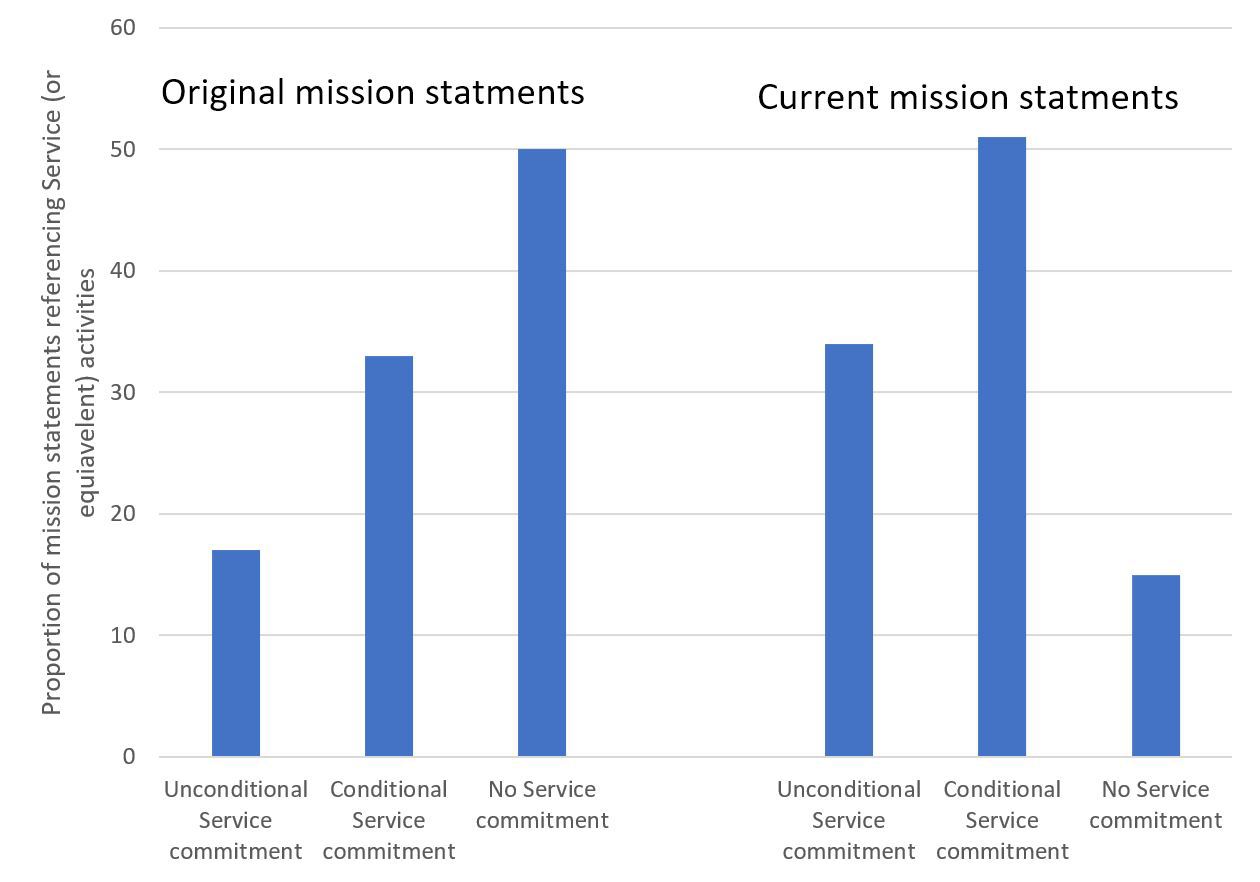Last year, one of us argued that now is a “positive moment of uncertainty” for universities – a time in which the controversies and tensions in higher education would perhaps ultimately have a beneficial effect, forcing universities to rethink their public purpose.
It was proposed that, as part of this rethink, universities should reflect on their commitment to society beyond education and research. Service is the word we at King’s College London use to encapsulate this commitment. It derives from the institution’s informal slogan “in the service of society”.
Other universities use different language – social responsibility or engagement, for example – but the key point is that this is an additional, third, mission. Clearly, this can and is delivered through education and research, but as was argued, if universities are to renew their social contracts they need to see service as a mission in its own right.
Silver service?
Some have suggested that we don’t need to rethink the public purpose of a university, but merely rediscover or reaffirm it, the argument being that service was often core to universities’ founding missions, but had been lost sight of in this managerial age.
We decided to examine this hypothesis. We took the top 71 universities in the Times Higher Education World University Rankings 2018 (as Boston University and Ohio State University were tied for 70th place) and looked at whether their founding or current mission statements made a reference to service.
We coded the mission statements into four categories:
- Those for which we could not find any relevant information (not available)
- Those where service or an equivalent social mission was not explicitly mentioned (no service commitment)
- Those where there was a service or equivalent social mission but it was delivered through education and/or research (conditional service commitment)
- Those where there was an explicit acknowledgement of a service or equivalent social mission, alongside education and research (unconditional service commitment).
A key caveat before moving on to our findings: it was not easy to identify and extract this information. This was because there was no clear moment of foundation or founding documentation for many of these institutions, and significantly different language was used in the past to describe the idea of service. We limited ourselves to 30 minutes for each university, and if we could not identify the data in that time we put it in the ‘not available’ category. This may have been an error, so we are interested in updating and correcting the data, which is available in this spreadsheet.
At your service?
What did we find? We identified founding statements for 42 of the 71 universities, and of these, seven (17%) made an unconditional service commitment, 14 (33%) a conditional service commitment and 21 (50%) no service commitment.
For today’s mission statements, we managed to collect data for 67 out of 71 universities. Of these, 23 (34%) made an unconditional service commitment, 44 (51%) a conditional service commitment and 10 (15%) no service commitment.
Leading universities’ commitment to service (as mentioned in mission statements)

What can we infer from these figures?
First, a health warning: this is not an academic study. We only allowed ourselves a limited time for searching online material, and a more rigorous, archived-based approach may have provided a more comprehensive and accurate data set. We also struggled with issues of language – understanding which phrases, many written centuries ago, could reasonably be interpreted as a commitment to service as we understand it today, and whether different terms in current use could mean the same.
Service station
Putting these caveats to one side, there are three emerging observations. The first is that the proportion of top-ranking universities which have an unconditional commitment to service is low, both historically (17%) and today (34%). So, for this group, the hypothesis that they are reaffirming their public purpose does not stack up.
The second observation is that the increase in unconditional commitments to service, and the decline in those with no commitment to service, suggests that this third mission is increasingly being acknowledged and adopted by top-ranking universities (albeit from a low base).
It would be interesting to expand this analysis by establishing when an unconditional commitment to service was adopted. We suggest this due to the challenges we faced in going back to the founding mission statements, many of which were either not available or were ambiguous in expressing a service commitment.
It may therefore be more appropriate to recast our core hypothesis of whether universities are reaffirming or redefining their service commitment as one about when the idea of service originated in their mission statements. With this in mind, we have added a column to the spreadsheet about the origin and date of adoption of a service commitment.
But the third, and perhaps more worrying, finding is that half of the top-ranking universities consider that their service mission is delivered through education and research, and therefore not a mission in its own right. This suggests a degree of complacency and gives credence to the idea that ‘the “positive moment of uncertainty” for universities is a chance to re-think their public purpose, creating parity of esteem between education, research and service as argued in last year’s blog.
If you would like to correct, comment or add to this analysis, please email jonathan.grant@kcl.ac.uk, who will try and provide an updated data set and analysis in a few months’ time.















Thanks for this blog. Interesting and so important to be having this conversation now. Would be useful to do a geographical analysis.